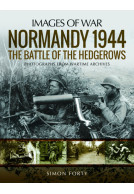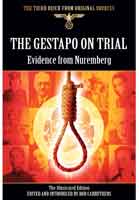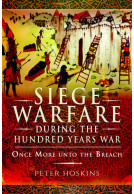The Thames at War (ePub)
Saving London From the Blitz
Imprint: Pen & Sword Military
File Size: 36.3 MB (.epub)
Pages: 208
Illustrations: 200 black and white illustrations
ISBN: 9781526768032
Published: 5th March 2020
| Other formats available | Price |
|---|---|
| The Thames at War Paperback Add to Basket | £12.79 |
| The Thames at War Hardback Add to Basket | £19.99 |
Between 1940 and 1945 London suffered 101 daylight and 253 night-time air raids from the Luftwaffe and V1 and V2’s. There were 80,000 fatalities or serious injuries and appalling devastation. Well documented as these horrific events are, there was another major threat – the all too real possibility of widespread flooding whenever the Nazi onslaught breached the Thames’ river defences.
This superbly researched and illustrated book describes the vital role and unsung achievements of the London County Council emergency repair teams ably led by Chief Engineer Thomas Peirson Frank. Three rapid response units were formed and, in the event, undertook repairs to over 100 breaches of the flood defences, thus saving the Capital from drowning.
We also learn of the fate of London’s docks and bridges and of the ships, boats and barges lost in the estuary and tideway.
This fascinating account has been compiled by the Thames Discovery Programme team and, 80 years on, pays tribute to the non-combatants who kept the major port running and saved London.
"A fascinating, illustrated account of the work that the men in the T-F units did to keep London safe."
London Westminster & Middlesex FHS Journal, December 2021
As featured by
Waterways World, June 2020
First-class documentation on a fact of enormous importance that we should never forget.
Miniaturas JM
Read the full Spanish review here
Milne's book examines a topic unknown to most people, which for many years has not found "a voice" that could tell the enormous effort of those who organized a system to prevent and combat damage to the river banks and of those who implement it, with a large and unfortunately unknown contribution from volunteers. No doubt the damage to the city of London would have been exponential without Peirson Frank's programming, and without the work and sacrifice of multiple voluntary organizations that intervened promptly and courageously.
On The Old Barbed Wire
Read the full Italian review here
I really enjoyd this book and felt proud of the role of Londoners during the Blitz. The photograph of the memorial to the two teenage girl firefighters killed while firefighting in the docks is particularly poignant.
The Anglo-Zulu War Historical Society, reviewed by Dr Adrian Greaves
Highly recommended.
This is a well written, profusely illustrated and meticulously researched book, that tells an important story which was suppressed at the time and has been little discussed subsequently. Whether you guide Blitz Walks around London, or whether you have a more general interest in the wartime history of our capital, then this book is for you and I thoroughly recommend it.
Despatches, COVID-19 Quarantine Special - review by Steve Hunnisett
September 2020 will mark the 80th anniversary of the first bombs dropped on London in what would come to be known as the London Blitz. The story of the Blitz, and those iconic images, are well known. Less well known is the story of London County Council's emergency repair teams who, whilst their colleagues on land were battling fires and saving lives, repaired breaches to Thames flood defences and thus prevented the capital from serious and cataclysmic flooding.
Paul Nixon
Other reviewers have commented that the number of archival references in this book could be off-putting. I didn't find this to be the case at all, and far from being a 'dry' read, Gustav Milne's book is fascinating, enlightening and authoratitive. With contemporary and modern day photographs, well laid out chapters, lists of incidents attended by the various teams, a good index and bibliography, plus the afore-mentioned archival references, there is nothing to not recommend this book. It was everything I hoped for, and more, and it will be a boon to anyone with an interest in the home front in London during the Second World War, and those with an interest in the Second World War generally.
Read the full review here
This original and superbly illustrated account of how London survived between 1940 and 1945 breaks new ground. Much has been written about London during WWII, but this is the first comprehensive account of how a new range of emergency services fought nature and the Luftwaffe and won. – Most Highly Recommended.
Firetrench
Read the full review here
A detailed and comprehencive account by Gustav Milne of the Thames at war.
Books Monthly
The meticulously researched book, as one would expect from an archaeologist, has many contemporary evocative photographs of the damage caused during the raids and of consequences and repairs.
Robert Bartlett
As a fan of London history I have found this book brilliant and an excellent read, the information and text is very detailed and well written, some might say too much. I think though in this particular book the images and photographs are almost as good as what you learn from the text. They really are brilliant photographs and do tell the tale of England’s capital city. While all the photographs are black and white, the only thing that could improve it is to have some modern day photos in colour thrown in. Like a ‘look how things have improved’ kind of thing. This book is wholeheartedly a 5 out of 5 stars, an excellent read.
UK Historian
Read the full review here
During the war the work of Thames Flood was kept quiet, not only so Londoners didn't get over-frightened but so we didn't give the Luftwaffe any idea of what even more serious damage they might have done. I learnt a lot about the Blitz on London which I hadn't considered before. My one wish is that I could have had this book just three years ago so I could have shared it with my mother before she passed away at the age of 101, and who had lived and worked in London throughout the war. Definitely recommended.
Military Model Scene, Robin Buckland
Read the full review here
This book sheds light on what until now has been an almost unknown but important aspect of London’s survival during the Second World War. It explains the vital work of the Thames-Flood unit, adding archaeological evidence to earlier records held at the London Metropolitan Archives. It makes an excellent companion to the earlier The Thames on Fire by Lieutenant Commander L.M. Bates (Terence Dalton Ltd., Lavenham, Suffolk, 1985), which gives a broader account of the war effort on the Thames during the Second World War. As would be expected of Gustav Milne (who has written or contributed to several books on early London history), this is a scholarly yet easily readable account. It contains much detailed information, together with extensive contemporary and modern photographs from many sources that illuminate the text.
The History of London
Read the full review here
This is a well-written, profusely illustrated and meticulously researched book and I have no hesitation in commending it to you, whether you are a guide like me, or have a more general interest in London's wartime history.
BLITZWALKERS
Read the full review here
Gustav Milne has written an amazingly well-researched book covering the little known, various London defences during the time of the blitz. He writes in particular, about the Thames-Flood emergency teams (TF) who were responsible for repairing breaches in the flood defences of the Thames These previously unknown heroes, by necessity, worked throughout the height of the air raids in some very dangerous situations.
NetGalley, Peter Coxall
This book will appeal to scholars and historians as well as those who just love London history. The prodigious amount of references somewhat distracts from the overall read. However, the photographs add a more engaging aspect to the book. Interestingly I even have some identical photos hanging on the wall of my office!
About Gustav Milne
Gustav Milne is an archaeologist, author and university lecturer. He began his career excavating with the Guildhall Museum in 1973 and was a founder member of the Museum of London’s Department of Urban Archaeology, excavating and publishing reports on many Roman, Saxon and Medieval riverfront sites. He subsequently taught for twenty years at the Institute of Archaeology, University College London where he set up the Thames Archaeological Survey and later The Thames Discovery Programme, the award winning community based project surveying archaeological sites exposed on the open foreshore. He also founded the Gresham Ship Project, the Evolutionary Determinants of Health programme and CITIZAN, a national, community based coastal survey, featured in the TV series Britain at Low Tide.
















